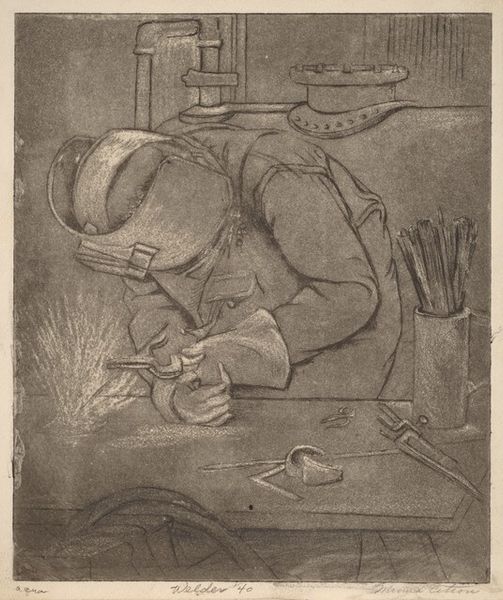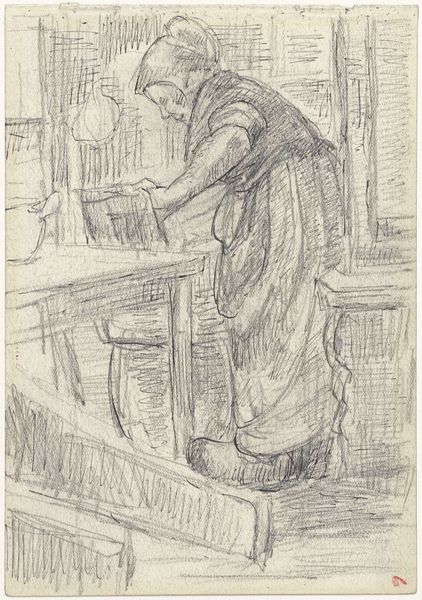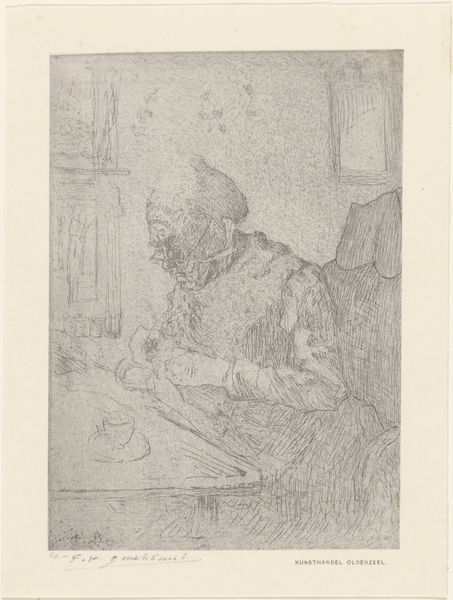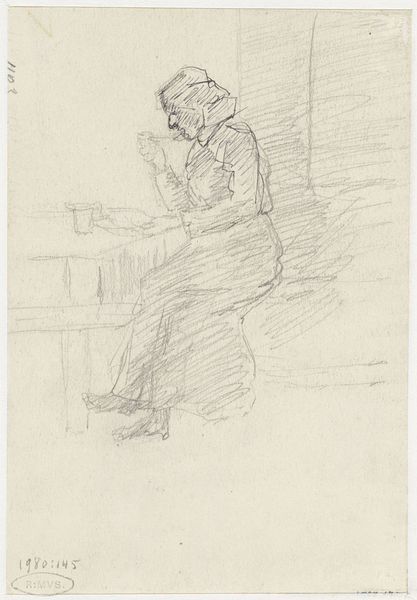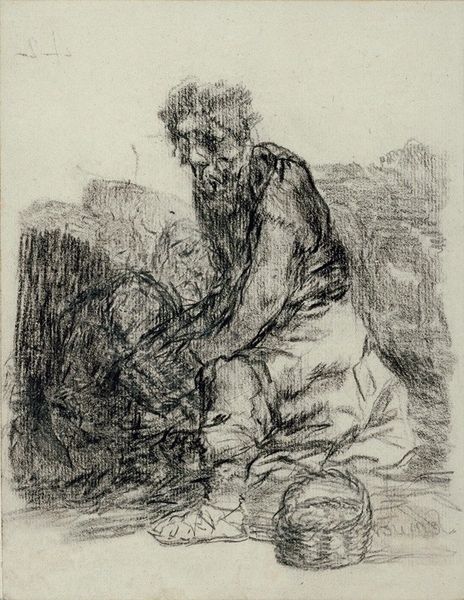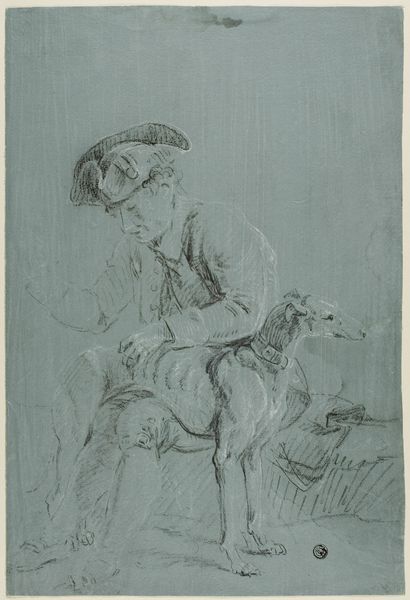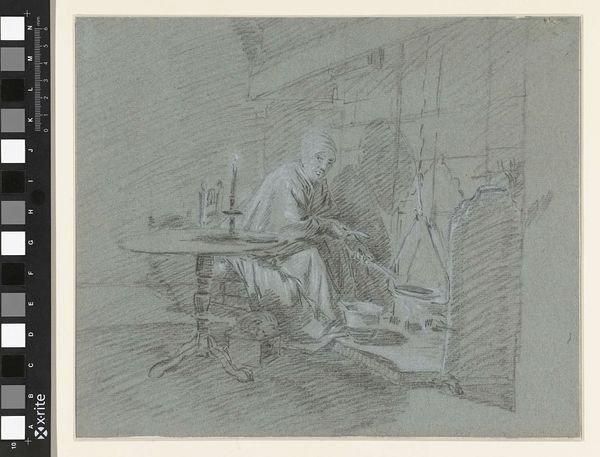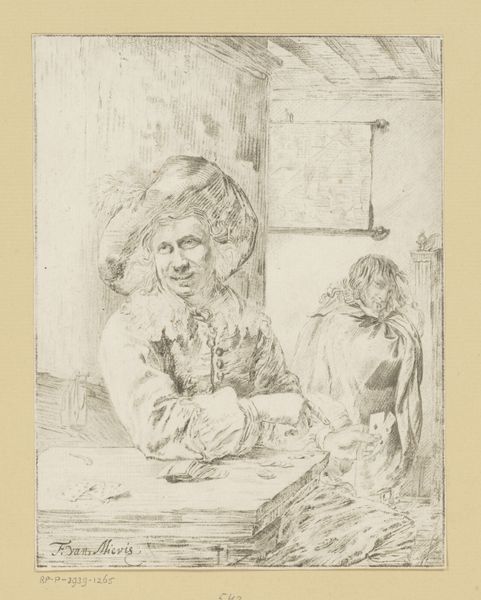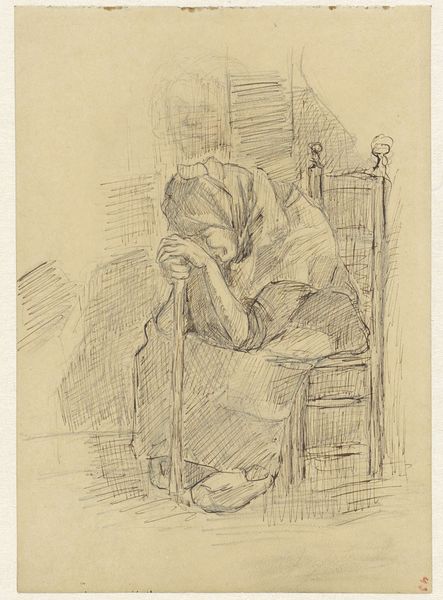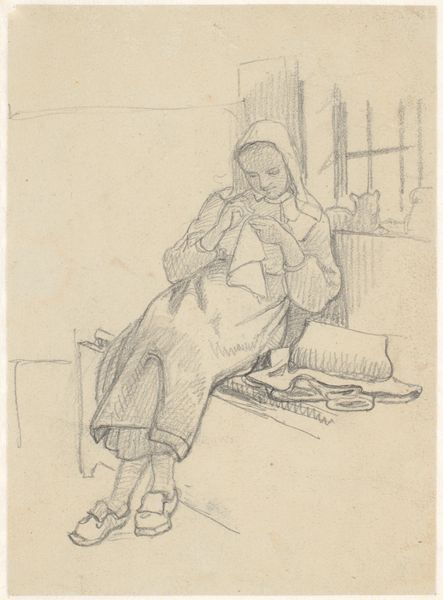
drawing, print, paper, ink, ink-drawings, pen
#
portrait
#
drawing
# print
#
impressionism
#
pencil sketch
#
paper
#
ink
#
ink-drawings
#
pen-ink sketch
#
water
#
pen
#
portrait drawing
#
genre-painting
Dimensions: 311 × 256 mm
Copyright: Public Domain
Curator: Here we have Max Liebermann's "Old Woman Mending at the Window," executed in 1881, a striking ink drawing on paper. Editor: My initial reaction is one of quiet contemplation. The monochromatic palette lends a somber, almost melancholic feel, despite the everyday activity depicted. Curator: Liebermann often focused on genre scenes. He found beauty in the mundane, didn’t he? The window becomes a liminal space between interiority and the outside world, offering a glimpse beyond domestic confines. Editor: Absolutely. It is a testament to his skill that this unassuming subject is made profound. What can be seen in this elderly woman’s mending? The act becomes almost symbolic: is she just repairing fabric, or piecing together the remnants of a life? Curator: Consider, too, the enduring image of the old woman across different cultures and religions. In folklore and mythology, older women frequently stand for knowledge, endurance, and the cycle of life. She represents the importance of simple living and an existence marked by the continuous thread of lived experience. Editor: You’ve just pointed out that in this era, rapid industrialization threatened those very traditional lifestyles, especially for women. In a time of upheaval, maintaining domestic order through the act of mending could be seen as a subtle form of resistance or self-preservation. The sketch itself seems almost unfinished, which reflects the sense that the labor is ceaseless and there’s always something left to be repaired. Curator: And Liebermann, belonging to a wealthy family, chose to look empathetically towards those often ignored in rapidly modernizing Europe. There is something compelling about the gaze this artwork demands. Editor: I am drawn to how it complicates simple notions of comfort and resilience during a transitional time. Instead, the sketch compels one to really consider intersectional narratives. Curator: Reflecting on the art, I appreciate Liebermann's focus on conveying meaning through everyday acts and how those images carry across cultures and generations. Editor: Yes, there's a lasting power in understanding how an artist uses simplicity to make us consider the deeper socio-political undercurrents affecting those rendered unseen by others.
Comments
No comments
Be the first to comment and join the conversation on the ultimate creative platform.
